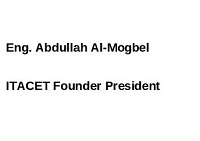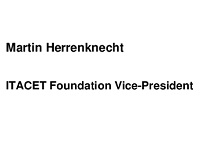SHINKUN-LA TUNNEL - Working in the Himalayas (Part 1)
Past ITACET scholarship recipient Sandeep Nirmal and his colleague Ahmed Shaz recounts for us their adventures working in the Himalayas on a tunnel project.
In early July, when most of India is under the influence of heat waves, we were standing on top ice laden Shinkunla pass at an elevation of 5054m, an unexplored, untouched axis connecting Himachal Pradesh to Zanskar (Ladakh). Snow around us, all white. It was a single lane rough, unmetalled road covered with debris, with loose adjoining slopes prone to failure, still not motorable at that point of time because of uncleared snow and avalanche debris on it - but thanks to the Lama who had at least built it in such extreme conditions. We were on a Recci visit for the Shinkunla tunnel. Our vehicle could only go as far as a km before the pass, and the rest needed to be trekked. Dr. Amit, aged around 50 managed to trek till Shinkunla pass crossing ice-cold streams and snow with his stick. Naseem and myself, the younger part of the three membered team, went further. It was 11:30 in morning and we decided to come back to the pass for 1pm where Dr. Amit would be waiting for us. Our target was to move to the proposed North portal which is on the other side of the pass. Since Google does not recognize that road, we didn't have any idea how far to go, just getting hints by reading mountains and valleys that it's not far. What we missed was elevation difference, being inexperienced of working in such high altitudes, and that small switchbacks one after the other made us descend 400m down. A thought came in between to return, but our energy and enthusiasm and concern of saving time for the whole team surpassed it. If not now then the other alternative to reach the North Portal was going back to Keylong (70km, 3.5 hours), then next day to Leh (375km, 12 hours), then 3rd day from Leh to Kargil (220km, 5.5 hours), 4th day from kargil to Padum in Zanskar (235km, 12 hours) and then 5th day from Padum to proposed North Portal (90km, 10 hours) and then same 5 days to return back. We kept going down till we reached the destination around 3:30pm. After taking the required observations, when I took a step backward, I realized what had happened. A 400m elevation difference at 5000m height. 50% oxygen, no phone connectivity, no beings neither animal nor trees, snow everywhere, air as cold as ice and temperatures to dip to -20° at night. In this condition while ascending upward, one step seems like a km and one gram weight seems like a ton. We recently came to the area and the requirement of acclimatization was again and again echoing in my mind and felt by my body. At one point I gave up hoping and asked Naseem to move on and at least save his life. I was concerned about the concerns of Dr. Amit at the pass. What if Dr. Amit had gone back? Doubtful. What if our vehicle gets stuck while returning as we had crossed many streams while coming? Family, friends, colleagues, work all started coming like a flash, when the sensation of mouth and lips were gone, and heart beats were sounding like as if listening from stethoscope. All I did was kept moving slowly over snow and avalanches, being motivated by Naseem (who is much fitter). Somehow around 7:30pm we managed to reach the top, where the driver was standing on a cliff waving and Dr Amit was waiting impatiently inside our vehicle. I literally felt unconscious on reaching the vehicle, but somehow got inside it. Our skilled driver managed to cross all the streams on our way back to our guest house at Keylong. Life saved finally. This was Shinkunla and it was only the beginning, the very first day.
I, being in Rites was working as a DPR consultant in JV with Geoconsult. Our project was to build a tunnel across Shinkunla pass in order to provide all weather connectivity to Ladakh, which gets disconnected to rest of India for more than 7 months in winter because of heavy snow accumulation and avalanches at passes (Shinkunla being one of these). So, all together we had a maximum of 5 months working season and only 3 months on field effectively. Not only the DPR of tunnel, but the work for the road was 100km long connecting to the main town of Zanskar called Padum to National Highway NH-3 in Himachal Pradesh through ShinkunLa Tunnel. And the worst part was, to get the rigs to the drilling locations, we had to construct approx. 10km of approach roads. All these works needed to be completed in this working season.
The project area was as remote as possible. There are yaks, ibex and wild horses roaming around, and they will stare at you wondering how we came to their planet. The 100km long road in Zanskar valley towards Padum was another world where you literally have nothing - no phone, no electricity, no roads, no shops but some 6 to 7 villages. Some villages have as little as 2 houses only. But a beautiful untouched place with mesmerizing views of meadows and giant snow-covered Himalayan peaks. You can see white Gompas around as you move along the road and streams with blue water gushing parallel to the road, the same blue water which we used to draw in our drawing books in childhood. Some camps of Pashmina goats can also be encountered near the villages. There are some beautiful monasteries, hundreds and thousand years old, carved inside the mountains. You wonder how people are managing to stay at this place and how their ancestors managed to build these monuments, when the maximum connectivity to the outside world is only for 4 to 5 months of a year. Truly a place of peace, a place of meditation.















